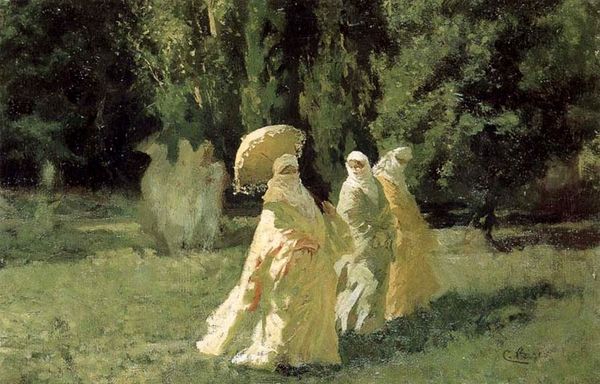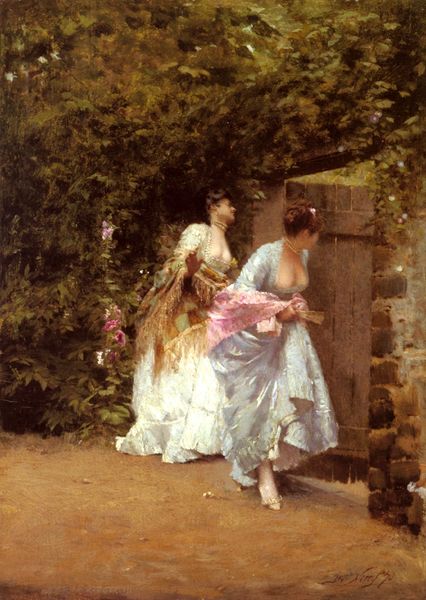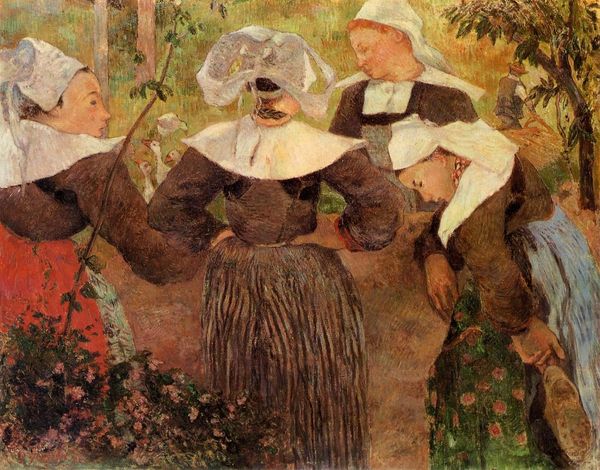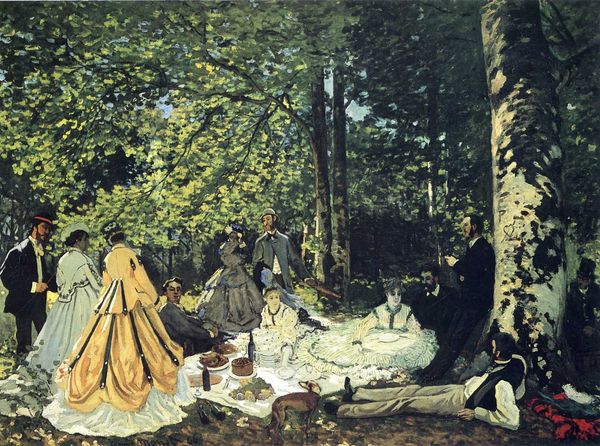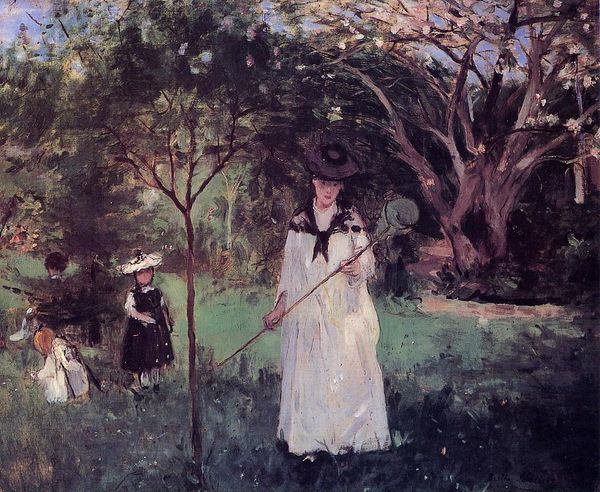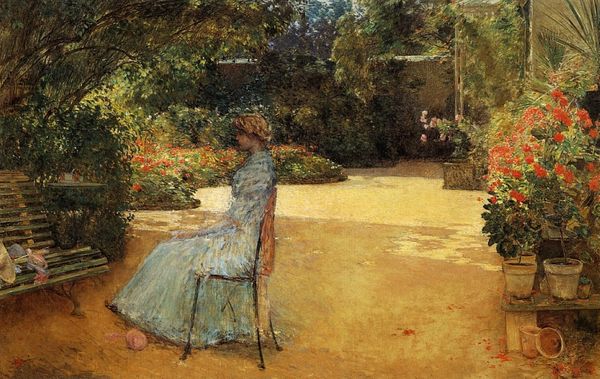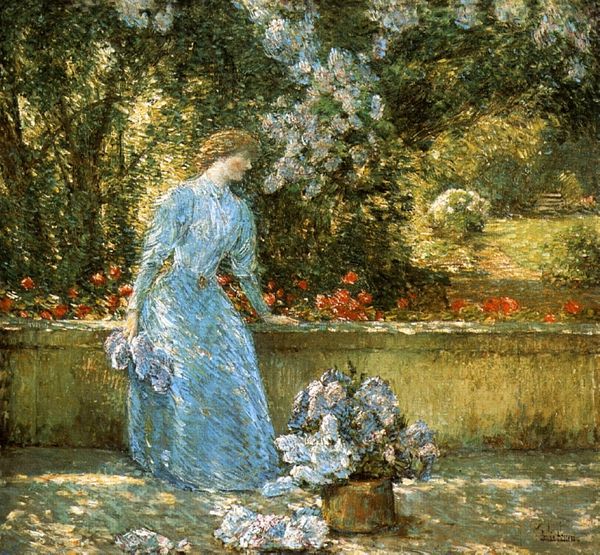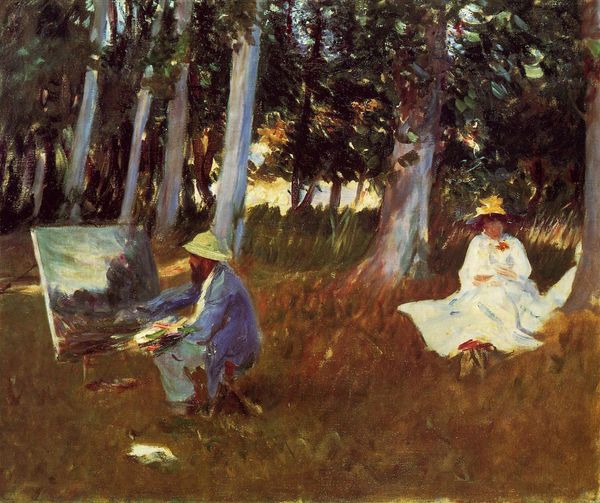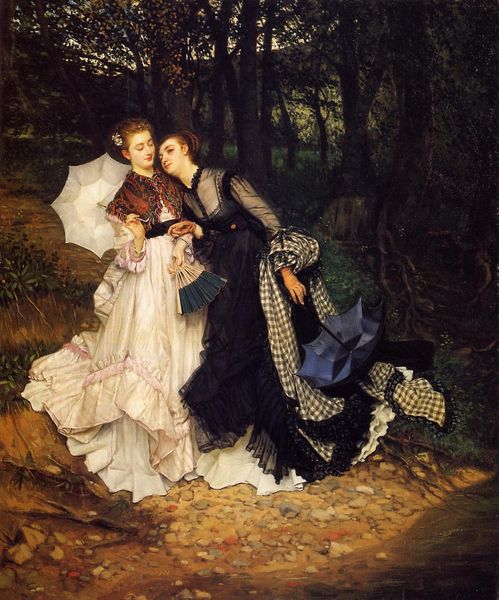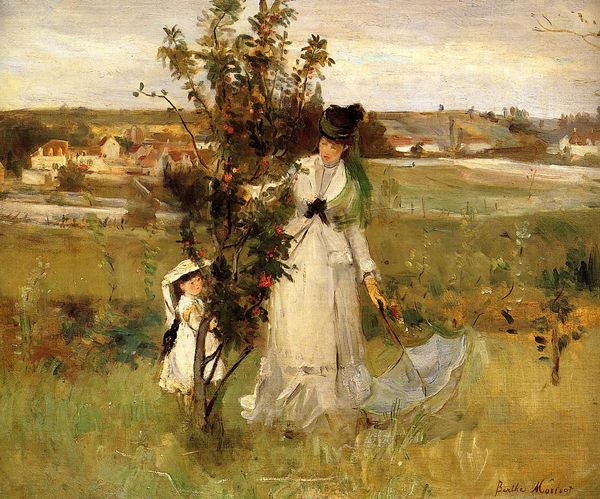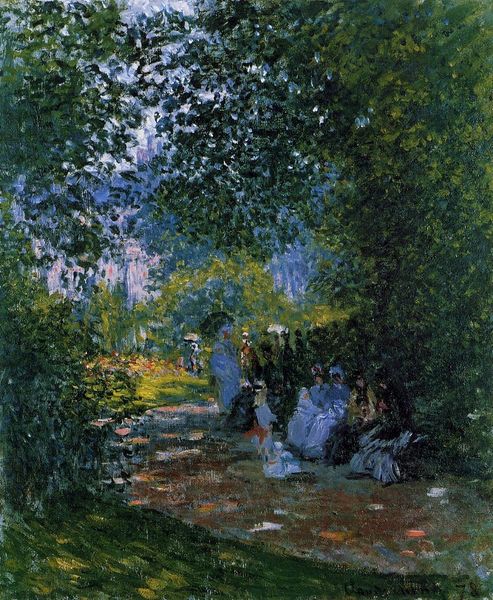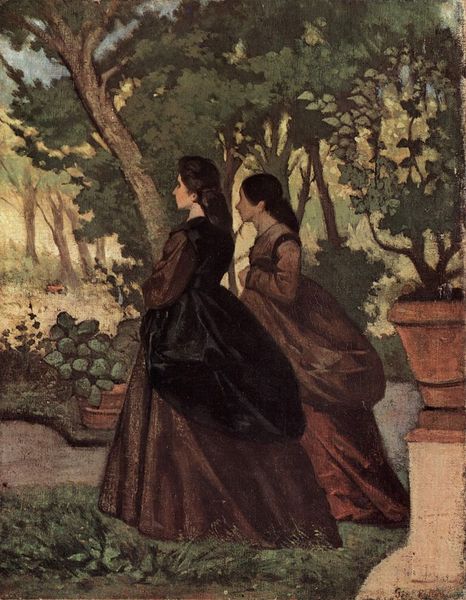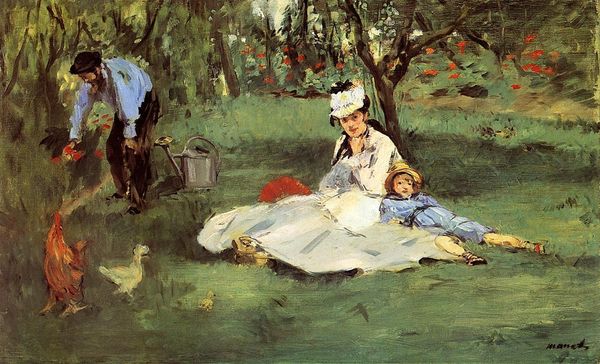
Dimensions: 205 x 255 cm
Copyright: Public domain
Curator: This is Claude Monet's "Women in the Garden," painted in 1866. He worked en plein air to capture the shifting effects of light on his subjects, all depicted in a verdant garden setting. Editor: It feels remarkably staged, doesn’t it? Despite being outdoors, there’s an almost theatrical quality to the way the figures are positioned and lit, which speaks to broader commentaries about gender and performance. Curator: It is interesting you mention the sense of performance, I believe it reflects a societal context that positioned women, particularly of the bourgeois class, within very specific roles and spaces. It would be very limiting as a woman! Editor: Absolutely. These women, adorned in elaborate dresses, become extensions of the garden itself—decorative elements within a controlled landscape. The parasol becomes a kind of prop almost... It also feels relevant considering Baudrillard's theories of simulacra and simulation, highlighting the interplay between the real and the hyperreal. Is Monet depicting a real garden or a constructed ideal of feminine leisure? Curator: Indeed. And their fashion, as an integral component, certainly conveys this interplay of identity, gender, and class—a system to which the dresses belonged during Monet's time. It is a world built for them to simply exist within. You can think of it from a Marxist or cultural standpoint, no real value or progress. This painting has the aesthetic qualities to allow such reflections, particularly about female suppression. Editor: Though it seems innocent at first glance, Monet’s decision to depict these women amongst this abundance feels far from simply capturing beauty. His use of light is of course quite new considering he does that "on-site," rather than just replicate what is outside from memory in a studio. His goal seems less to deliver beauty as opposed to an experience. Curator: Agreed, and reflecting upon it through the social lens allows us to unravel even the smallest brushstrokes of symbolism. Editor: What begins as a relaxing garden view quickly deepens into the more substantial topic of women's lives back in 1866. It all appears a lovely image, only for an experience full of context about societal constraints on women and commentary through class division and more.
Comments
No comments
Be the first to comment and join the conversation on the ultimate creative platform.
